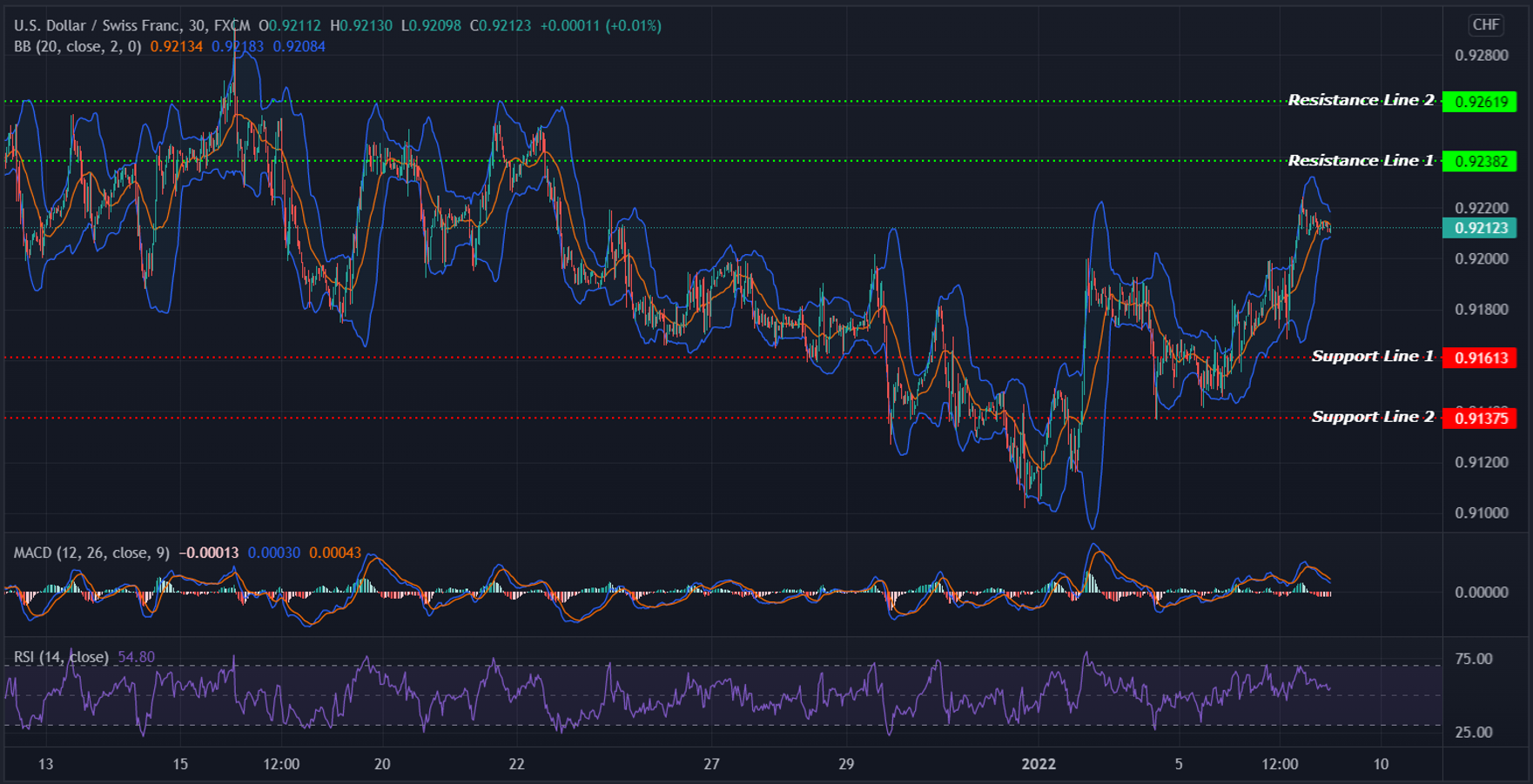INTRADAY TECHNICAL ANALYSIS 7 JANUARY (observation as of 06:50 UTC)
[EURUSD]
Important Levels to Watch for:
- Resistance line of 1.13329 and 1.13517.
- Support line of 1.12724 and 1.12537.
Commentary/ Reason:
The euro posted moderate gains against the dollar on Friday, traded at $1.13027.
The pair slipped about 0.7% for the week.
The rise in 10-year T-note yield to a 9-month high improving the dollar’s interest rate differentials.
However, a weaker-than-expected U.S. economic data for weekly jobless claims and Dec ISM services weaken the greenback.
Signs of inflation pressures in the Eurozone were hawkish for ECB policy and supportive for the euro. Eurozone Nov PPI rose 23.7% y/y, stronger than expectations of +23.2% y/y and the largest increase since the data series began in 1982. Also, German Dec CPI (EU harmonized) rose +0.3% m/m and+5.7% y/y, stronger than expectations of +0.2% m/m and+5.6% y/y. The inflation data pushed the 10-year German bund yield up to a 2-1/2-year high.
Divergent central bank policies continue to dictate the currency movement. The Fed is currently tapering QE and may start to raise interest rates as soon as March, well before the ECB plans to tighten monetary policy.
The EUR/USD seesawed around the daily range, ahead of the European session. The bullish case could gain strength if the pair breaks above 1.133-35, while bears will have better chances on a break below 1.127 or maybe at 1.1220, December monthly low.

[USDCHF]
Important Levels to Watch for:
- Resistance line of 0.92382 and 0.92619.
- Support line of 0.91613 and 0.91375.
Commentary/ Reason:
The dollar was subdued on Friday, but still hovering just below the 1-week high it records yesterday.
The pair was last traded at 0.92123 franc and is heading for more than 1% weekly gains.
The gains have tracked firming expectations that the Fed could raise rates as soon as March and several times this year - driving a bond market selloff and a rise in yields.
The U.S. dollar was strengthened after U.S. Treasury yields recover from earlier losses, after the Fed meeting minutes on Wednesday came in more hawkish than expected.
Given the bullish MACD and the quote’s weekly advances, a clear upside break of 0.923 is more likely, which in turn could propel the quote towards around the 0.926.
However, that a clear downside beak of the 0.916 will drag the quote lower.
Fed rate-hike concerns and virus updates will be catalysts for the next pair movement.

[USDJPY]
Important Levels to Watch for Today:
- Resistance line of 116.387 and 116.636.
- Support line of 115.580 and 115.330.
Commentary/ Reason:
The greenback advancing on the yen, which was at 115.933 per dollar, still in sight of Tuesday's five-year high of 116.342.
The dollar is set to notch up a fifth consecutive weekly gain on the Japanese yen and looks poised to extend the rally if U.S. labour data due later today reinforces the case for early Federal Reserve interest rate hikes.
Central bank divergence also was weighing on the yen. The yen has been the most prominent loser among major currencies, as traders reckon the Bank of Japan is likely to lag global interest rate hikes.
Intraday bias in USD/JPY remains neutral for consolidation below 116.34 temporary top. Some consolidations could be seen but downside should be contained above 115.58.

[GBPUSD]
Important Levels to Watch for:
- Resistance line of 1.35705 and 1.35980.
- Support line of 1.34815 and 1.34540.
Commentary/ Reason:
The pound traded flat against the U.S. dollar on Friday. It last bought $1.35425, not far from Tuesday's two-month high of $1.35981.
Sterling managed to hold its own this week, despite broad buying support for the greenback, backed by better US employment data and following the Fed minutes and anticipation of faster policy tightening, as traders figure the Bank of England will also soon to begin its own hiking path, with surging Omicron cases in Britain to not deter the decision.
News that Britain will not introduce fresh COVID-19 measures against the rapid spread of the Omicron variant also supported sentiment.
Elsewhere, investors continue to monitor signs of a slowing economic recovery, mounting inflationary pressure, record rises in COVID-19 cases and post-Brexit tensions over the Northern Ireland protocol.















